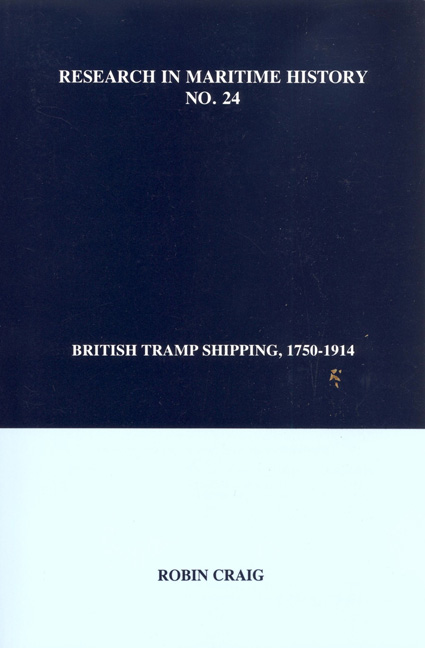Book contents
“The Deep-Sea Shipping of Thanet in Mid-Eighteenth Century”
from E. The Southeast
Summary
None of Thanet's three harbours could safely accommodate vessels of considerable size. Margate, Broadstairs and Ramsgate in the mid-eighteenth century had tidal harbours, nearly dry at low water, and with little more than twelve feet (3.7 metres) of water on spring tides. This would have precluded their use by vessels of much more than 150 tons burthen without hazard. Moreover, any laden vessel of this capacity entering a Thanet harbour on the safer spring tides, might be subject to considerable delay by being beneaped as tides fell away. The little Thanet harbours were, however, more or less adequate for the modest traffic in imports and exports which prevailed at the time, and which have been described by William, Andrews and Whyman (see bibliographical note). Much of the trade was in agricultural produce, domestic necessaries, building materials and coal. Nearly all these types of cargo would have been conveyed in small craft, such as the Thames Hoy which played such an important part in the vast commerce of the River Thames and its busy seaward approaches. Probably the largest vessels regularly to enter the Thanet harbours were smaller types of collier, bringing coal from North-East England, and smaller quantities of culm from West Wales.
A factor in Thanet's relatively limited seaborne commerce was the modest hinterland that the harbours served. There was no great staple trade to stimulate the construction of expensive harbour facilities. An exception must be made in respect of Ramsgate, where the need for a harbour refuge had been long recognised. On the periphery of the busiest sea lane in the western world, fringed by the ever-menacing Goodwin Sands, it was at the centre of public attention as the strategic point where ships could shelter from prevailing gales, and where craft could resort for the repair of heavy weather damage. Again, there were proposals for a “new cut” to improve navigation on the River Stour to Sandwich in the 1750s. In the case of Ramsgate a harbour was constructed, whereas the proposals for Sandwich never achieved fulfilment.
Lack of an appreciable hinterland and the absence of a major staple trade, were not of themselves an impediment to a substantial investment in shipping.
- Type
- Chapter
- Information
- British Tramp Shipping, 1750–1914 , pp. 377 - 384Publisher: Liverpool University PressPrint publication year: 2003

